QuestionI'm an admitted newbie making newbie mistakes.
Tank age (too young) = 2 weeks.
20 gallon tank.
3 tetras, 2 goldfish, 2 "pastel" fish, 1 skeleton fish and 1 white 2-3 inch sucker fish.
pH = 7.4 - 7.6
Ammonia and Nitrite = unknown
Before I even ask my question, I know it is too early to have anything but 2 hardy fish in the take. That was the original idea with the goldfish. Then, my mother-in-law (bless her soul) brought home all the other fish on Christmas Eve as a present. I couldn't leave them in the bag, and the tank looked OK (happy goldfish and 4 real plants), though I know it is still just in the ammonia part of the cycle with few if any nitrites, much less nitrates yet. So I'm trying to dodge your finger as it tells me I shouldn't have added fish yet. ;-) The fact is, they're in there. :-(
The problem is the 2-3 inch white sucker fish (wish I could attach a picture so you could see what kind it is). He was VERY happy and energetic as soon as he joined the tank last night. Scurrying all over, sucking the glass like a madman. This morning, he was much more lethargic, laying about on the bottom of the tank, moving in fits and starts once every minute or 3. His white had turned to a tinge of peach or orange. Midday today, I noticed a small (2-3 mm) black/grey speck on his body near his dorsal fin. Later this afternoon, he is getting noticeably more orangish and doesn't look good, laying still with fins not moving.
Any ideas? Do you need more details?
AnswerHi Ed;
The poor guy is probably being poisoned by "new tank syndrome" toxins. Bottom feeder fish are affected more than others sometimes. Make a 25% water change right away and another one every day for the next 3 more days. This will lower the toxins without stressing the fish further.
The best thing you could do for all of them next would be to take the goldfish out and not replace them until the tank breaks in. Goldfish are extrememly messy fish even while small. For one to live to it's adult size of 6 to 8 inches it needs 10 gallons by itself. Their high waste load is making the toxins go even higher than they should. They are also coldwater fish and can't live in the same environment with tropicals on a long term basis. It's just a bad situation for everyone.
Here are some links to helpful articles for new hobbyists like yourself;
http://freshaquarium.about.com/cs/beginnerinfo/a/fishcalc.htm
http://fins.actwin.com/mirror/begin.html
http://badmanstropicalfish.com/community.html
http://badmanstropicalfish.com/charts/good_bad.html
http://www.aquariumpros.com/articles/fishcyclefw.shtml
http://www.fishpalace.org/Community.html
http://freshaquarium.about.com/cs/qa/l/blqa2006.htm
http://groups.msn.com/TheAquariumGroup/thenitrogencycle.msnw
Here is my article on new tanks to help you get through the next few weeks;
**********
New Tank Syndrome or Break-in Period
So you have a new tank and you filled it up, put the filter together, mounted the heater into place and turned on the lights. You have all the plants and decorations where you want them....
You are ready for fish.
But, your filter is not ready for a full tank of fish yet.
The filter is running and moving the water and cleaning out crud, right? Of course!
But a very important part of your filter is the part you can't see. An aquarium filter removes the larger visible stuff, but it also must remove the dissolved fish waste that turns into ammonia in the water. To do this, special bacteria must grow in the filter system and on the particles of gravel in the bottom of your tank. This process occurs even on a limited scale in little fish bowls that have no filter in them.
This is "New-Tank Syndrome" or the "Break-in Period". The entire process takes 6 to 8 weeks to complete because these "nitrifying" bacteria grow quite slowly.
Start off with only one or two hardy fish (no more than 2 total inches of fish) for every ten gallons of water and don't add more until the 6 to 8 weeks has gone by. Hard to be patient, but it is worth it to keep your fish alive and healthy. As a matter of fact, the bacteria cannot develop without fish in the tank. You can let that tank sit forever without fish in it, but as soon as the first fish goes in the process begins. Avoid changing the filter pads during break-in. This removes the bacterial colonies that are essential to a balanced aquarium. You can rinse the filter pad out in a container of aquarium water. This will preserve most of the bacteria colonies while still allowing your filter to flow freely. Even using bacteria additives and water conditioners when you first set up the tank will not make a tank begin the cycle by itself. If there are no fish to provide food (fish waste) for the bacteria, the beneficial bacteria cultures will die and you will have to start the colonies all over again once fish are added to the tank. Once the tank has completed the initial cycle, you can change the filter pads every 4 weeks or so. But for now, just rinse them.
Feed your new fish VERY lightly. Any excess food will cause additional waste your system cannot afford to have right now. If you see food floating around or lying on the plants and gravel after five minutes, too much food is going into the tank. Cut back a little each time you feed until it is ALL gone 5 minutes after you feed them. Feed them once a day.
During this "break-in period" your tank will become cloudy and milky looking. You may have to tolerate this for the entire break-in period but it is only temporary. Changing 25% of the water three times a week until the break-in period is over helps a great deal. Changing water reduces the ammonia and nitrites that rise while the bacteria continues to multiply. If ammonia and/or nitrites become too high, your fish will become stressed and possibly die. Use a good water conditioner when you replace the water and make sure it is the right temperature to avoid shocking your fish.
When the break-in is over after 6 to 8 weeks and there are no nitrites or ammonia present in the water you can slowly add more fish. Add one or two every week until you reach the desired population. This allows the bacteria to adjust to the new population every time before adding more. Monitor the nitrites and ammonia to be sure they don't come up. If they do, make a 25% water change and check them again. Don't add the next fish until the levels are down again.
The safe maximum population for any size tank is one inch of adult fish for every gallon of water in the tank. Do some research to be sure of the fish you are interested in. Even though they are small when you buy them, you have to base your population calculations on full-sized adult fish. Many hobbyists have up to two inches per gallon but this can be risky. If a water quality issue arises or a disease occurs it will spread fast and furious in an over-populated tank. In any case, 25% water changes every week to two weeks are absolutely essential for the health of your fish.
Following these guidelines will help you get your new tank on the right track.
**********
At Your Service;
Chris Robbins
Come on over and join us on the freshwater fish forum at About.com to get even more information too;
http://freshaquarium.about.com/od/questionsanswers/a/naavigateforum.htm

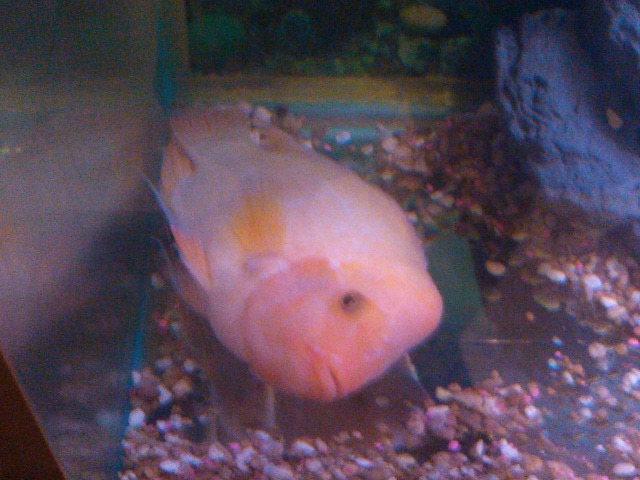 Red Devil Cichlid
Question
Red Devil Weird Swim
OK... Well,
Red Devil Cichlid
Question
Red Devil Weird Swim
OK... Well,
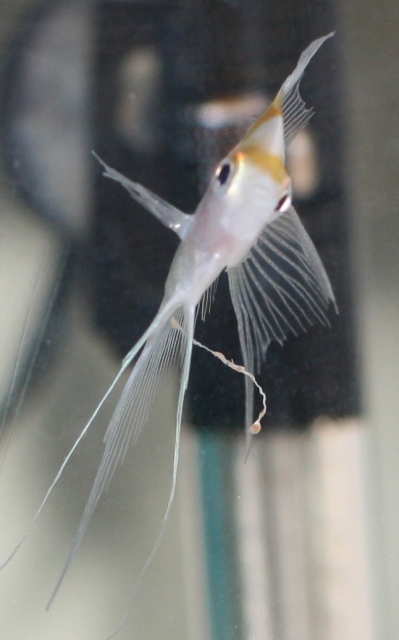 another two sick fish
QuestionQUESTION: My angelfish got sick two weeks ago,
another two sick fish
QuestionQUESTION: My angelfish got sick two weeks ago,
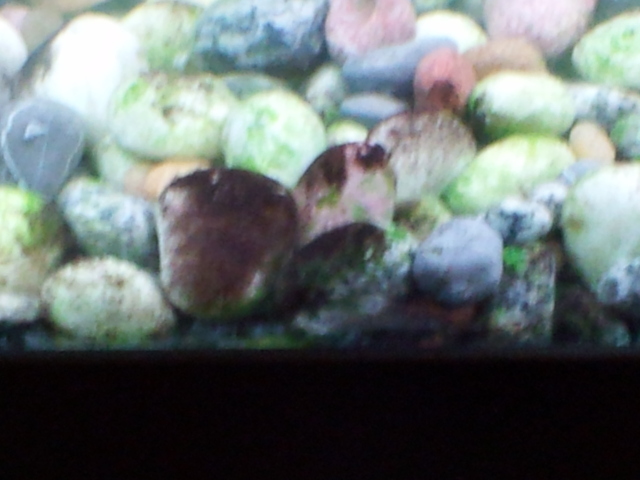 mold growing in our 150 gallon fishtank
Question
fish tank
We had Oscars in our tank and
mold growing in our 150 gallon fishtank
Question
fish tank
We had Oscars in our tank and
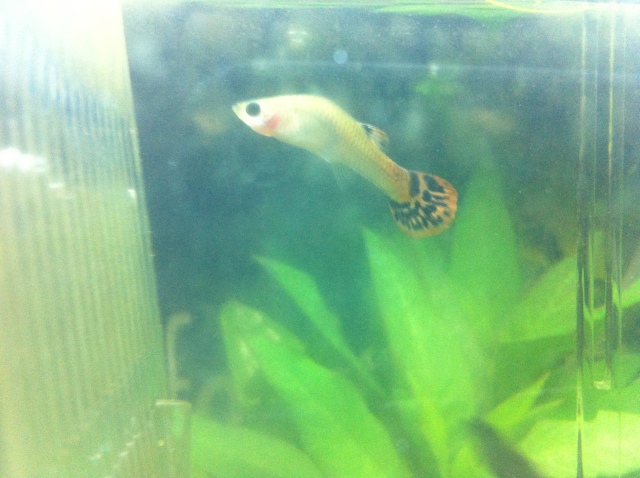 Female guppy with bent spine
QuestionQUESTION: I have a female guppy which has devel
Female guppy with bent spine
QuestionQUESTION: I have a female guppy which has devel
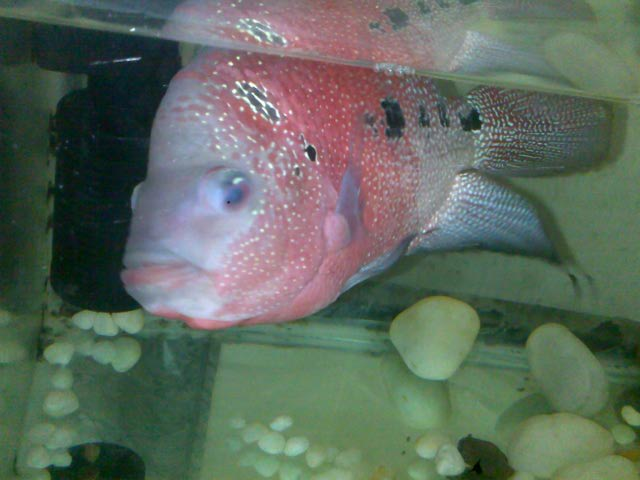 Flowerhorn Fish
Question
Last flowerhorn Fish Present Aquarium &n
Flowerhorn Fish
Question
Last flowerhorn Fish Present Aquarium &n